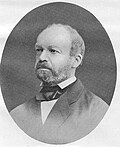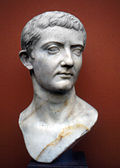Classical Latin
Classical Latin is the form of Latin that was used by the Ancient Romans in official Roman records, the Roman army, and Latin literature. Its use helped the Golden Age of Latin literature, during the 1st century BC and the early 1st century AD.
| Classical Latin | |
|---|---|
| LINGVA LATINA, lingua latina | |
 Latin inscription in the Colosseum | |
| Pronunciation | [laˈtiːnɪtaːs] |
| Native to | Roman Republic, Roman Empire |
| Region | Mare Nostrum region |
| Era | 75 BC to AD 3rd century, when it developed into Late Latin |
| Language family | Indo-European
|
| Early forms: | Old Latin
|
| Writing system | Classical Latin alphabet |
| Official status | |
| Official language in | Roman Republic, Roman Empire |
| Regulated by | Schools of grammar and rhetoric |
| Language codes | |
| ISO 639-3 | – |
| Linguist List | lat-cla |
| Linguasphere | 51-AAB-aaa |
 The range of Latin, AD 60 | |
Classical Latin is a dead language, as is Vulgar Latin, the common speech of citizens in the Roman Empire. Latin is no longer spoken as a first language, but it is still spoken by church officials in the Vatican, where it is the official language.
Classical Latin Media
At Maecenas' Reception, oil, Stefan Bakałowicz, 1890. An artist's view of the classical. Maecenas knew and entertained everyone literary in the Golden Age, especially Augustus.
Marcus Tullius Cicero, after whom Teuffel named his Ciceronian period of the Golden Age
Marcus Aurelius, emperor over the last generation of classicists and himself a classicist.






